Introduction Mermaid Tarot Deck
Menu of Contents
I. Origin of Mermaid Tarot deck
Major Arcana Mermaid Tarot Deck
Minor Arcana Mermaid Tarot Deck
1. Wands Suit Mermaid Tarot
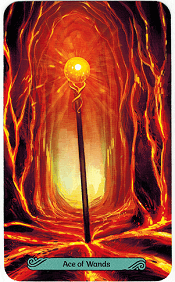 Ace of wands Ace of wands | 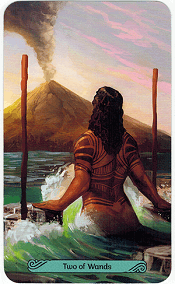 2 of wands 2 of wands | 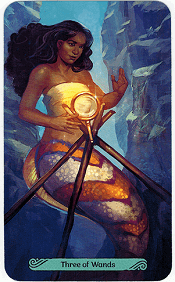 3 of wands 3 of wands | 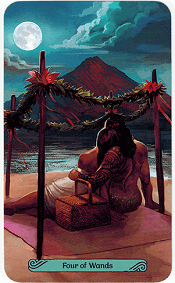 4 of wands 4 of wands |
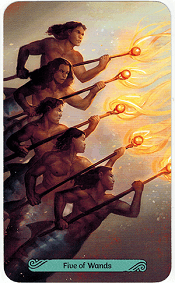 5 of wands 5 of wands | 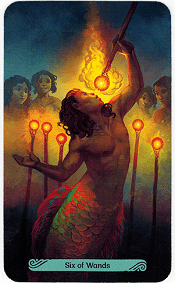 6 of wands 6 of wands |  7 of wands 7 of wands | 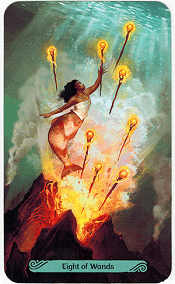 8 of wands 8 of wands |
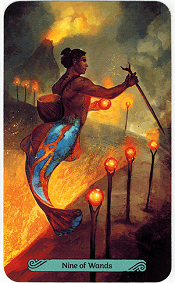 9 of wands 9 of wands | 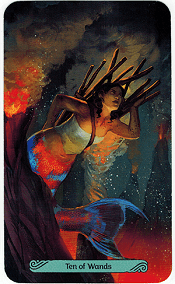 10 of wands 10 of wands | 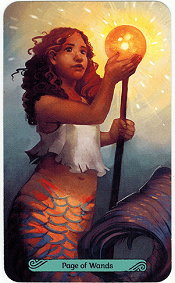 Page of wands Page of wands | 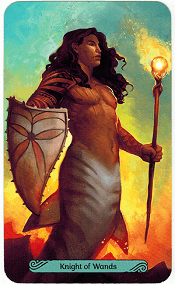 Knight of wands Knight of wands |
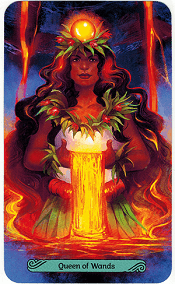 Queen of wands Queen of wands | 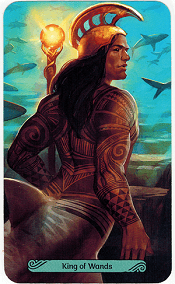 King of wands King of wands |
2. Cups Suit Mermaid Tarot
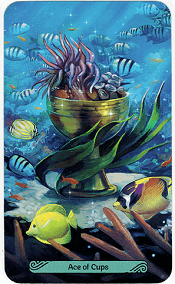 Ace of Cups Ace of Cups | 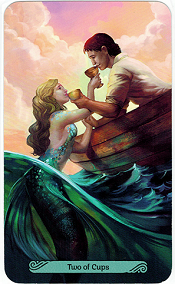 2 of Cups 2 of Cups | 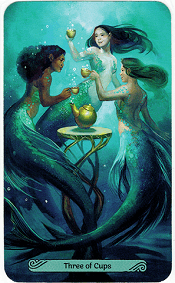 3 of Cups 3 of Cups | 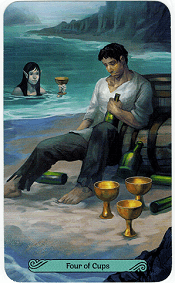 4 of Cups 4 of Cups |
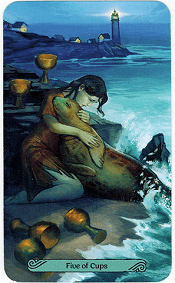 5 of Cups 5 of Cups | 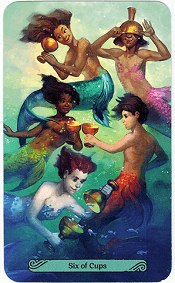 6 of Cups 6 of Cups | 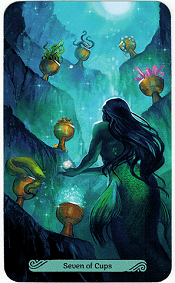 7 of Cups 7 of Cups | 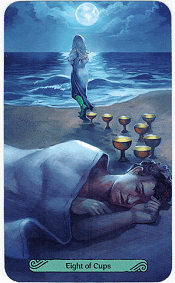 8 of Cups 8 of Cups |
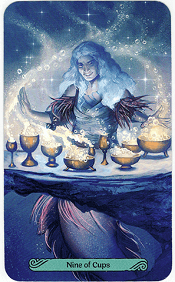 9 of Cups 9 of Cups | 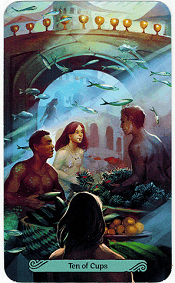 10 of Cups 10 of Cups | 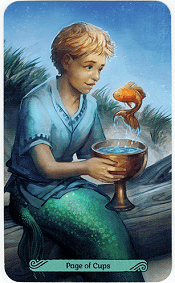 Page of Cups Page of Cups | 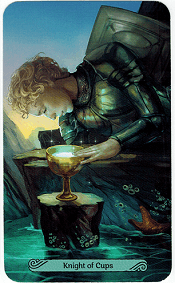 Knight of Cups Knight of Cups |
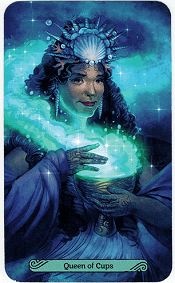 Queen of Cups Queen of Cups | 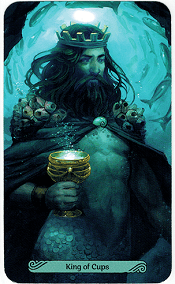 King of Cups King of Cups |
3. Swords Suit Mermaid Tarot
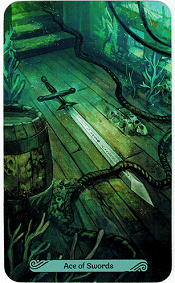 Ace of Swords Ace of Swords | 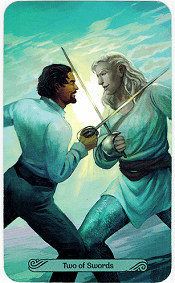 2 of Swords 2 of Swords | 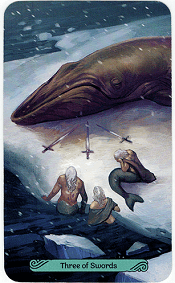 3 of Swords 3 of Swords | 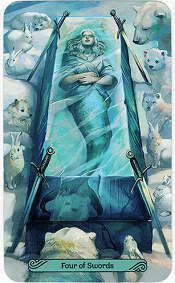 4 of Swords 4 of Swords |
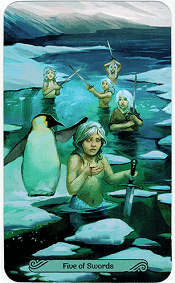 5 of Swords 5 of Swords | 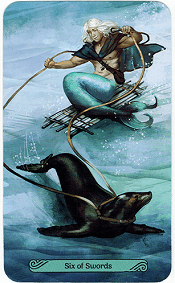 6 of Swords 6 of Swords | 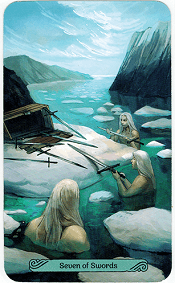 7 of Swords 7 of Swords | 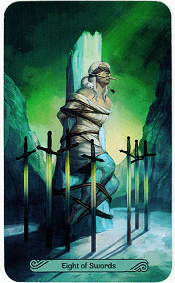 8 of Swords 8 of Swords |
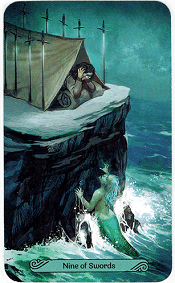 9 of Swords 9 of Swords | 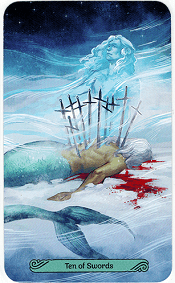 10 of Swords 10 of Swords | 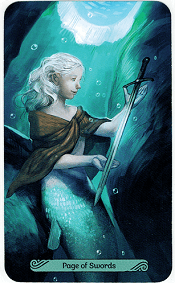 Page of Swords Page of Swords | 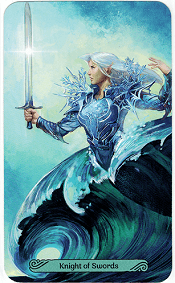 Knight of Swords Knight of Swords |
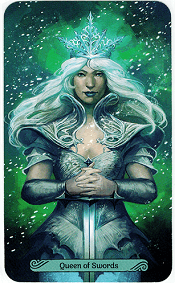 Queen of Swords Queen of Swords | 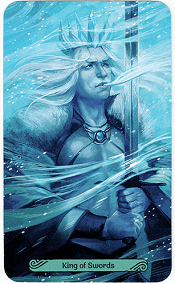 King of Swords King of Swords |
4. Pentacles Suit Mermaid Tarot
II. About the Authors of the Mermaid Tarot
Leeza Robertson (Las Vegas, NV) is the author of Tarot Court Cards for Beginners and Tarot Reversals for Beginners, and she is the creator of two Tarot decks, the Mermaid Tarot and the Animal Totem Tarot. She runs her own online class called Moonbeamers, which focuses on Tarot and the cycles of the moon.
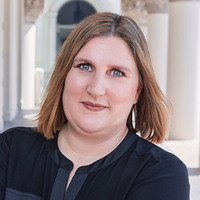
Leeza Robertson spends more time on Tarot than she does with other people. You will find her tucks away in cozy and comfortable corners with decks of cards and stacks of books around. She spends her days dreaming of new decks and finding ways to bring more people into the Tarot world. As long as she is not sticking her nose in a book or playing with decks of cards, she is probably going on a hike, traveling, or looking for a new book to read voraciously.
Along with Leeza Robertson, Julie Dillon (Los Angeles, CA) is a freelance artist whose clients are Simon & Schuster, Penguin, Tor and Wizards of the Coast. She is the winner of several Hugo, Chesley and Locus awards for best artist.
III. Concept of the Mermaid Tarot
The Mermaid Tarot is clearly a mermaid-themed Tarot deck. It has 78 cards and follows the traditional Rider-Waite Tarot system. There are 21 Major Arcana cards and 56 Minor Arcana cards. Since this deck has an ocean theme, it has a strong aquatic energy. That being said, the Minor Arcana cards still carry substantial elemental energy. For example, as we can see from the images below, red is the main color theme for the Wand suit and the Fire element is very prominent throughout the suit.
The illustrations of the Mermaid Tarot are generally very well done, especially the depiction of the Minor Arcana. There is a common theme for each suit. The Wands suit has quick and volcanic energy to it while in the Swords suit we can see a lot of ice and snow, which corresponds to the element of Air and is definitely reminiscent of the cold of steel.
It is true that the Minor Arcana is very well crafted but it is the Major Arcana that makes it a unique deck. Although the deck generally follows the Rider-Waite system, the authors developed their own understanding of the meaning of each card in their creation process. Therefore, the meanings of some cards differ from the original Rider-Waite tarot deck. For example, in the Lovers and the Death, the symbolism and meaning of both are quite different from the original Rider-Waite. This is not a bad thing, depending on your personal preference. Regardless, this makes the colorful guidebook especially important, because many readers will need to use it to understand the meanings and symbols in this particular deck.
The guidebook is well written and beautifully demonstrated. Full-sized images for each card can be found in the book along with in-depth explanations. However, it is important to note that the symbols of the cards are not directly indicated and explained in the manual, instead, the book tells a story about the card and the message it is trying to convey. This makes it fun to read but can also be a limitation for beginners.
All the images from this deck are very well drawn. Great attention has been paid to the details in each drawing. Even non-Tarot readers can appreciate the artwork presented in the Mermaid Tarot. The guidebook tells the beautiful stories on each card and explains in detail what they mean. It is also worth noting that all the suits are themed and it is quite easy to feel the general energy of the cards, simply by looking at the images. The cards have a glossy finish, which means they look good and they don’t stick together, making shuffling cards easier.
IV. Target readers of the Mermaid Tarot
This deck is for readers who have been waiting for quality mermaid-themed decks, Faerie and fantasy-themed decks, intuitive readers, and readers of all levels. If you enjoy incorporating elemental and/or seasonal correspondences into your readings, you will also love this deck. The symbolism in the Mermaid Tarot is not esoteric in nature, so it will not appeal to readers looking for astrological symbols, Qabalah, and other esoteric symbols.
This deck is absolutely perfect for those with a true fascination with mermaids and the ocean, as well as collectors of Tarot cards in general. However, it is not recommended for readers to use it for daily readings because of its fragility. The deck is also not really suitable for beginner readers because some of the cards in this deck have no traditional meaning. For beginners looking for a Tarot deck based on the Rider-Waite Tarot system, something that carries a more strict ‘traditional meaning’ to you is suggested, before you are ready to deviate from the mainstream.
V. Structure of the Mermaid Tarot
One of the things that makes the Tarot deck is the structure, order, and connection between the three acts. These three acts (or you may call them the three parts) are included in every Tarot deck and they help you to explore your spiritual progress, stages of development, and lessons in your daily work. It is this particular system of structure that helps you in distinguishing a Tarot deck from a regular Oracle deck. If you are holding a deck that does not have 78 cards divided into 3 parts including the Major Arcana, Minor Arcana, and the Court cards, it is not a Tarot deck.
Each Tarot deck interprets a theme and idea of the 78 cards in a unique way. In the Mermaid Tarot, you will notice the story, ideas, and themes the cards are telling you through the lens of the myth of mermaids. Each part of this deck brings a lot of stories written about them – the people living in the water, deep in the ocean.
4.1. Major Arcana Mermaid Tarot
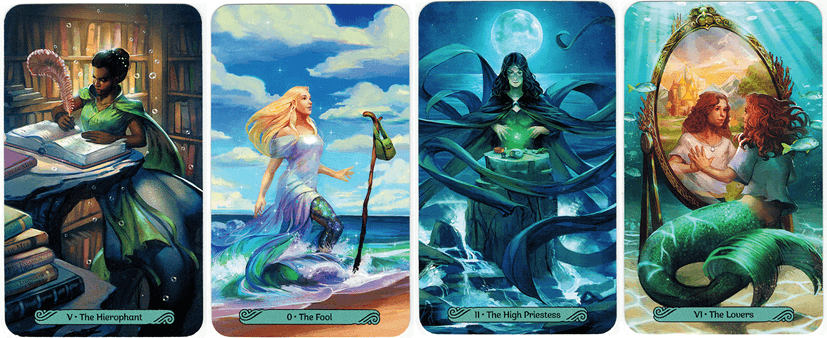
The 22 cards of the Major Arcana are created not only to lead you on a journey from one cycle to another but also to give you spiritual and philosophical lessons in each card. In many ways, we are all Fools born of waves and sponges, learning to overcome many difficulties on land in human form. The Fool’s journey, yours and mine, features lessons and challenges marked with Major Arcana cards numbered 0 to 21, from The Magician to The World. Treat the stories of the mermaids and the Arcana as if they are your teachers or guides. Hear the wisdom they impart and see how they guide you through the land, air, fire, and waters of the Tarot empire.
4.2. Minor Arcana: Group of Court cards
All the Court cards are waiting to help you understand the stages you need to go through as you go around this Tarot empire. The King and Queen cards in the Mermaid Tarot are male and female with their own power – they have power, prestige, and thousands of years of knowledge to share with you. Each of them will show leadership, inspire, protect, and manage you in very different ways. They not only show you how to be creative but also show you how to manage your work well. They will also teach you how to create an environment in which such works can grow and expand. Pay attention as they show you how a community under a good leader can serve and benefit all.
The Knights of the Mermaid Tarot share lessons about honor, respect, and duty. They remind us of all the things we have been able to do for a better life for the community and for ourselves. Knights can often carry messages from one kingdom to another, but it is up to you to hear and receive the messages they bring. Most of these messages are about uninteresting aspects of life, so it is not uncommon for someone to pretend not to hear them. The Knights help prepare us for larger roles in the community and remind us to sharpen our skills and maintain good and productive habits.
The Page cards link us to the energy and miracles of the inner child, going back in time to a time when we were still figuring out who we were and discovering what we wanted to be when we grow up. The Pages encourage curiosity and give us space to play with the elements and ideas of each kingdom in the Tarot. Pages are the first step or opening to a topic, idea, process, approach, or skill in many different ways. With the Page cards, we learn new habits that we can move on, strengthen and master when we become a knight in the Knight card.
Each Court card represents a step or process along the path in The Fool’s journey. Starting a new skill or habit with Page, we train and hone it, taking the leap to Knight until that practice, commitment, and determination pay off as we make our way to Queen and King. It is during the period of Queen and King that Page’s potential reaches its true strength.
4.3. Minor Arcana: Group of cards from Ace to 10
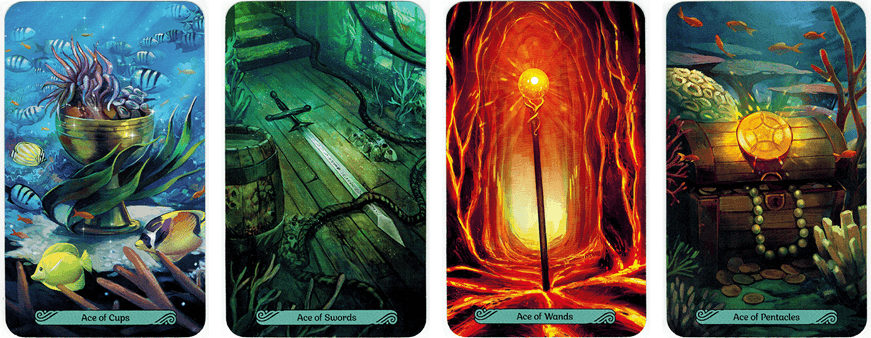
The cards numbered from Ace to 10 in the Mermaid Tarot are the last cards of the Minor Arcana. These cards represent daily life in the four kingdoms of mermaids. The kingdom of the Wands is represented by the guardians of its volcanoes. The kingdom of the Earth group (Pentacles) in this deck is represented by the guardians of rivers, lakes, and waterfalls. They look after all the terrestrial waterways. The kingdom of the Water group (Cups) is represented by the guardians of the deep ocean. They reign in the vast, endless expanse of the sea and control wild currents, manage the weather, and patrol the darkest and deepest caves. The kingdom of the Swords group is filled with guardians of the ice floes at the poles. Harsh terrain, isolation, and wilderness are their domain.
The numbered cards of each kingdom or elemental group guide us through the blessings and challenges of the present land. From the Aces to the Tens, we see aspects of the mundane and the daily activities within each realm in different ways.
- Ace: start, starting point, new opportunities, new ideas, new resources.
- Two: relationships, selection; bring people, ideas, places, and other things together.
- Three: collaboration, expression, community, effort to balance.
- Four: structure, routine, order, building strong relationships and foundations.
- Five: change, consequences, opportunity, conflict, solution.
- Six: distinguishing, nurturing, learning about your place in the present.
- Seven: a lesson in concentration, patience, determination, and will.
- Eight: strength, constancy, a judgment of time, hard work.
- Nine: breakthrough, battle scars, rewards, everything comes together in the end.
- Ten: legacy, ending a cycle, completing a journey, achieving a goal.
4.4. Notes on reversed cards
In general, reversed cards are cards that are reversed. During a reading session, one or more cards may appear with reversed images. The reversed card or reversed meaning is also very important. Usually, the cards should be read in the direction in which they are chosen or drawn. You will find in this book that there is a reverse meaning in the card meaning description to assist you in getting the full story from the card and your reading as well.
You should use reversed meaning even if in the spread there are no cards turned upside down. You never know how the cards can block, suppress or redirect each other’s energy and flow in your reading. For mermaids, all information is relevant – until it is no longer relevant. If you want to learn more about reversed meanings and learn how to seamlessly incorporate them into your reading, check out the Tarot Reversals for Beginners. Now you are ready to start your journey to the territory with the mermaids. Take it slow and use this cultural exchange wisely. Most importantly, enjoy your time underneath the water.
VI. 5 steps to perform a reading with the Mermaid Tarot
- Step 1: Set an intention for your reading
Before you draw, decide what the purpose of your reading will be. Does that purpose solve the problem? Are you looking for an answer to a specific question or are you just pursuing general guidelines? Be clear and concise. Choose only one thing you want to ask the Mermaid Tarot. When asking questions, avoid falling into the trap of passive questions that don’t require specific answers. Ask an active question so the cards can give you a clear direction. Once you set a goal, keep your question in mind. Think of it as a mantra and repeat it over and over in your head as you take the second step.
- Step 2: Choose a spread
A spread, in very simple terms, is how you want to spread the cards to answer a question or answer to your intention statement. If you are new to Tarot, a simple 1- to 3-card spread is more appropriate. If you have more experience in reading, you probably already have a reading spread in your head.
- Step 3: Shuffle, cut, and spread the cards
Some people are quite picky about their card direction, bends and flows, and shuffles while others don’t care much. Regardless of how you like to shuffle, you should think about this before you curl your fingers around the deck and cup it in your palms: place the deck face down in front of you, gently place your palm over the deck, take 3 deep breaths, focus on the mantra (your question), imagine you want to take every word of the mantra/question out of your head and let it appear in front of you until can see it as a complete sentence. If necessary, you can close your eyes. Once the question in your mind is clear and you feel yourself at the moment, pick up the deck and start shuffling. You will be surprised how quickly connecting with your physical, mental and spiritual breathing has the power to change the energy around you.
Once you feel you have had enough shuffling, you can decide if you need to cut your cards. Cutting means when you split your deck into two, three, or four piles and decide which pile to draw from which to spread the cards. If you don’t like cutting cards, then it is time to spread your deck. Above all, you should know that there is no right or wrong way to shuffle, cut, and spread.
- Step 4: Draw and place
Now you have shuffled, cut, or spread and you are ready to draw cards for your chosen spread. You will also have to decide whether to place the cards face up or face down. Again, this is a personal activity and there is no right or wrong in taking this step. So take it easy, draw cards and place them in your spread.
- Step 5: The reading
This step is broken down into three sub-steps. Even if you have a 1-card spread, these steps are still relevant. Each sub-step will in turn lead you through the reading process. To some readers, reading is more than just a solution to all problems. There are many ways to interpret and apply the meaning of the card to the actual context of your question. In this step 5, there are the 3 most common ways to read the cards. Take the time to go through each of these steps and you will be able to finish your reading and do your first mermaid swim before you even know these extra steps.
Literally: One of the suggested ways to start a reading session is to directly interpret the images on the cards. This way, you will only focus on face values without resorting to any other interpretation. For example, The Emperor is an old figure holding a trident looking out of the way or the Eight of Wands shows the image of a mermaid hurling herself towards wands while forgetting all the others exist. Let’s start looking at the card normally first. Make a note and then go to the next step.
Intuitively: One of the best parts of Tarot is using the deck as an intuitive tool, allowing it to expand your awareness slowly but surely and help you understand gut feelings and intuitive hits. There are many times when your intuition has told you something completely different from the meaning of the picture depicted in the card in front of you. The images on the card can trigger a message that needs more attention than the general question you ask, so sit down for a moment and take a close look at the card you draw. See what is going through your head and write it down on the notepad you used in the previous step. You don’t have to write meaningful sentences – just write them down on paper and go to the next step.
Narrative: This reading step is a way to combine the logical, intuitive, and traditional meanings of the cards in the Mermaid Tarot you draw. This is also the step that makes you want to refer to the card interpretation in this book. Now you can combine logical and intuitive interpretations with the meanings of the cards and create a story to answer your question. Remember: as you begin to build on the story the cards are telling, choose only what information is relevant to the question you asked. You can also take notes on things that seem important to other aspects of your life, but keep the focus on this step to answer your questions. Even if you only have a single card, you have a whole story to tell. If you have three to five cards, your story will be much more interesting.
If you draw Court cards in the Mermaid Tarot, it means you have characters to write about the story going on around them; now we actually have the characters inside our story. Who are they? Write the story in a sentence of 2-3 lines so you can better understand the flow of the cards so you can swim with them. Writing will also familiarize you with how the cards work together and tell different stories with different pairs of cards and positions. Once you get that story, you will also have the answer to your first question.
In order to deepen your reading, it is advisable that you consult as many other books on Tarot as possible, as well as other things related to Tarot such as astrology, numerology, moon studies, Pagan studies, spiritual philosophy, energy activities, etc. The more you know, the better the story will be written, and the answers from the cards will also become clearer.
VII. The Mermaid Tarot’s recommended spreads
6.1. “Daily journal prompt” spread
While a One-card Tarot spread is still a technical spread, it would be better to see it as a daily mermaid reminder. Drawing a card daily is a great way to connect with your deck and help you get a feel for new cards. This type of spread allows you to build a close relationship with the individual cards in a deck. The prompt from this one card is sometimes the fastest and most effective way to absorb the information you need at a given moment.
This daily journal prompt is easy to do: all you need to do is pick up your deck, shuffle the cards while you take a deep breath, ask the mermaids for your daily message, and choose a card. You will draw one and only one card. Never mind the attraction of the other cards, just pick one. Once faced with your only card, follow the sequence outlined earlier.
It is recommended that you do this one-card spread every morning and from there you can see what the card represents or teaches you that day. At the end of the day, you can do the following journal prompt as below to review the card’s morning message and the story that happened during that day’s activities. Journal prompts:
- How did that card appear today?
- How does that card affect me?
- Which element of the card stands out most in my daily life?
- What was the meaning of the card and its prompt?
- What obstacles or challenges did this card bring to me today?
<< See more >> How to Ask a Tarot Question?
6.2. “Two heads are better than one” spread
One of the favored things about Tarot is that each card can change, transform, flex depending on the other cards around it. Most of us tend to be different from those around us in certain social or work situations, the cards themselves do not have a fixed nature in the way they show. This spread for the Mermaid Tarot (or a two-card spread, if you like to call it that) also helps you build a deeper relationship with your cards. It will help you understand what they say, interact and change to fit the group to which they belong.
You can use this spread as a quick way to answer a question or simply add it to your Tarot journal. One advantage of this spread is that you don’t even have to ask questions. You can draw two cards and read them together at random. You can also shuffle the cards until two cards drop, place them side by side and interpret them. What about drawing a card then constantly changing the card it pairs with? You will be surprised at how much different The Hermit can be when paired with one of the more communicative cards like the Three of Cups, Six of Pentacles, or Four of Wands.
6.3. “What, where, how?” three-card spread
Most questions can be answered with a sincere three-card spread. In many ways, they can turn out to be the right fit for everything you need. This simple spread is one of the spreads used to solve problems. It is a great spread that you can use when you are tired of procrastination or when you really don’t know what your next step should be or what action to take. The beauty of this spread is that you don’t even need to focus on anything in particular. In this spread, the cards will do everything for you. This spread asks three very simple questions:
- Card 1: What do you need to pay attention to right now?
- Card 2: Where do you best focus on that?
- Card 3: How has that helped you in your current situation or situation?
Place the cards down in a vertical or horizontal row. Form does not matter, as long as you remember which card is number 1 and which card is number 3. Slowly enjoy your three-card spread.
6.4. “The four elements” spread
With this spread, you will need to divide the deck into five piles. First, the elemental groups need to be individually piled and ranked from Ace to Ten, Page, Knight, Queen, and King. The Major Arcana cards then go to a pile from Fool to World. That means you will have a pile of Wands, Cups, Swords, Pentacles and a pile of Major Arcana (cards with roman numbers on them). Make sure all the piles are face down.
Although mermaids in the Mermaid Tarot live in the water, they are very adept at transforming the elements into usefulness, and in this spread, they want to show you how to use the elements for support and guidance. Select the pile of Major Arcana and shuffle, still face down. Think about your question. Bring it to your mind as a complete sentence. Hold the card face down, select a card and place it on the table or reading cloth in front of you. Pick up the pile of Swords and shuffle again while focusing on your question. Again choose a card and place it directly above the first card you draw, making sure the card is still face down. Now pick up the pile of Cups and do the same things, but place the card to the right of the first card. Next, take the pile of Pentacles, focus on the question and draw, placing the card below the first card. Finally, take the pile of Wands and draw a card, placing it to the left of the first card. What you need to do is have the Major Arcana surrounded by four elements: Air above, Earth below, Water to the right, and Fire to the left.
- Card 1 Major Arcana: Each Major Arcana is a step in the cycle, from the beginning of The Fool to the complete energy cycle of The World. Where do you find yourself with your current situation or problem along the way?
- Card 2 Swords: How does the wind of change blow? Does it make you happy or hinder you?
- Card 3 Cups: What is the flow of this situation or problem? Does the water flow where it needs to go or is it moody and stagnant?
- Card 4 Pentacles: How strong and solid is your commitment to get the results you want?
- Card 5 Wands: Fire can burn with determination or with anger, how does your fire burn and is it burning as you please or is it leading a shortcut to destruction?
Take time for your reading, don’t rush it. Sit down with the cards and really engage with the elements.

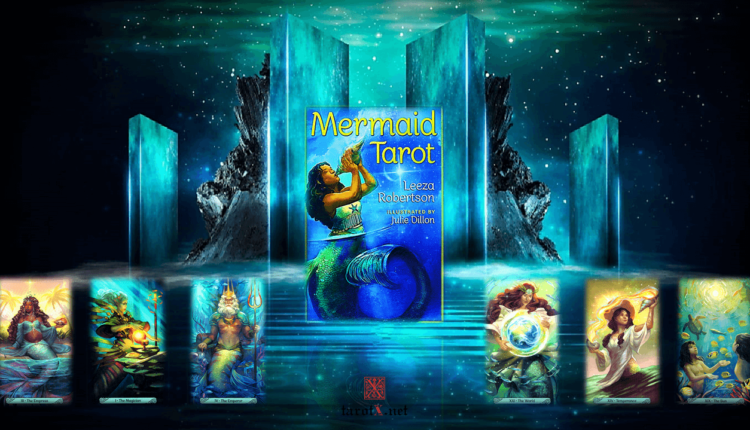
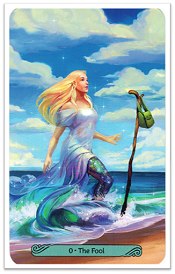
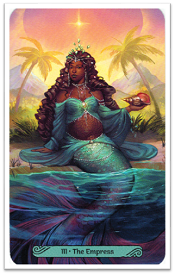
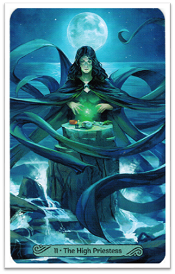
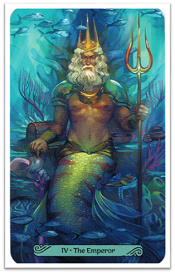
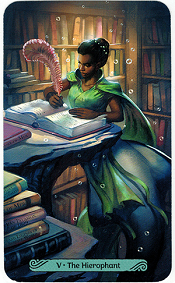
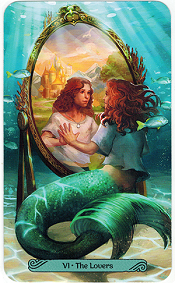
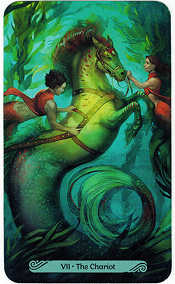
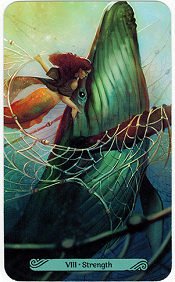
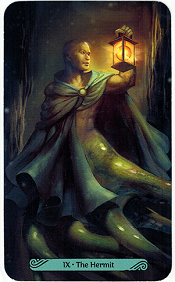
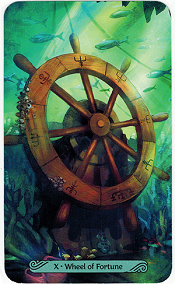
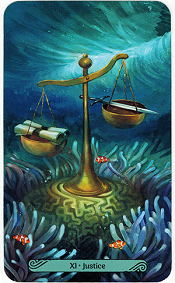
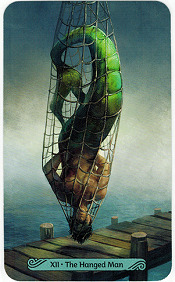
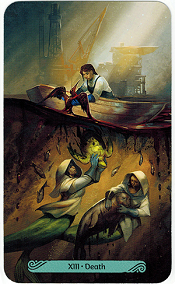
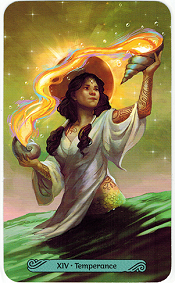
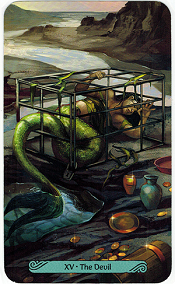
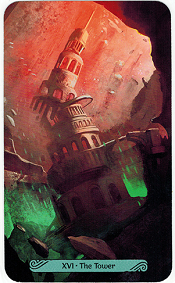
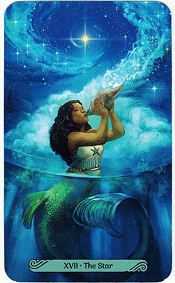
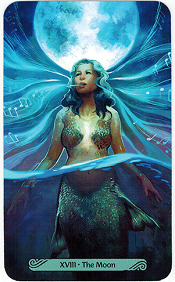
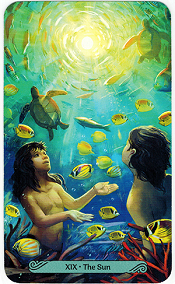
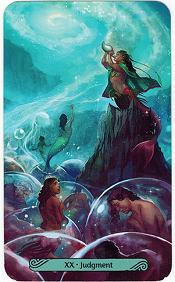
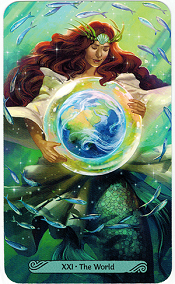
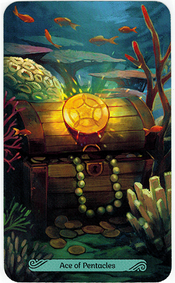 Ace of Pentacles
Ace of Pentacles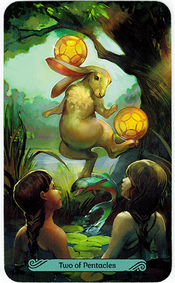 2 of Pentacles
2 of Pentacles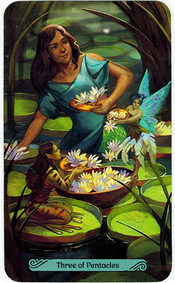 3 of Pentacles
3 of Pentacles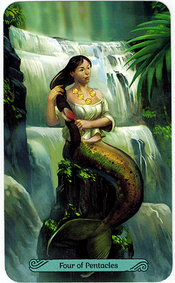 4 of Pentacles
4 of Pentacles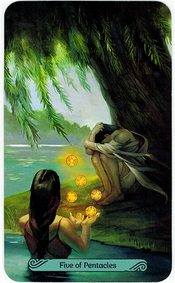 5 of Pentacles
5 of Pentacles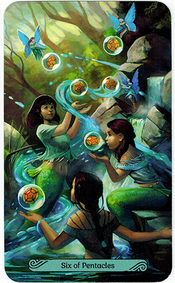 6 of Pentacles
6 of Pentacles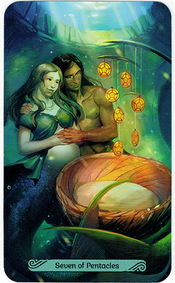 7 of Pentacles
7 of Pentacles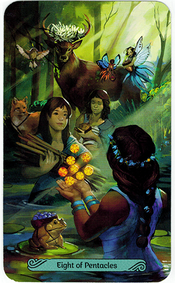 8 of Pentacles
8 of Pentacles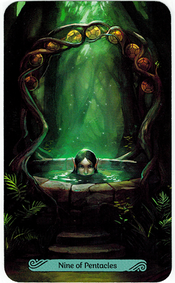 9 of Pentacles
9 of Pentacles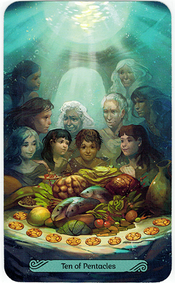 10 of Pentacles
10 of Pentacles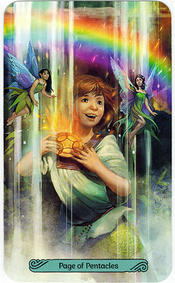 Page of Pentacles
Page of Pentacles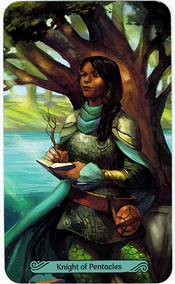 Knight of Pentacles
Knight of Pentacles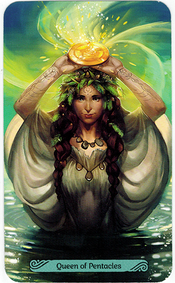 Queen of Pentacles
Queen of Pentacles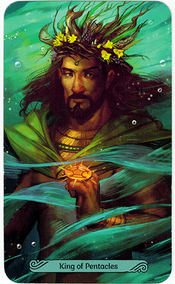 King of Pentacles
King of Pentacles